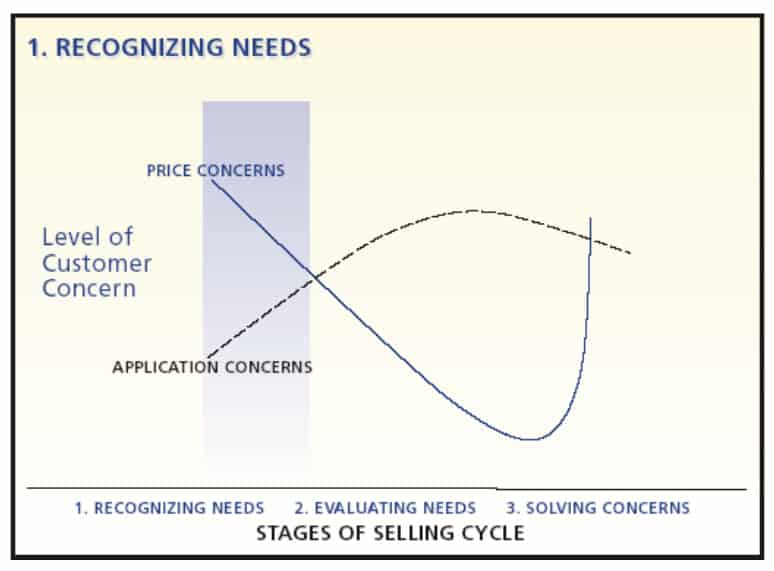Selling on Value Instead of Price (Part 2)
Have you ever reached the end of a deal, and then at the last second been blindsided by unreasonable price objections? This predicament is all too familiar for many salespeople. But is the objection really price-related, or is there more to it?
Price is often cited as a significant concern towards the end of a deal. However, it is not uncommon for a customer to express price objections when, in fact, he has concerns about deeper issues. In that case, offering a price discount will not alleviate those concerns. The key is to be able to discern – and address – the real objection. Here are some situations in which buyers may be worried about issues that go way beyond price:
High-profile purchase – Some purchases are so important (either very large or very visible within the organization) that the buyer’s career will be impacted by the outcome of the purchasing decision.
Competitor’s account – Sometimes a purchaser will have to switch suppliers to buy your product. The current supplier may be highly regarded, making it risky for the buyer to move to an unproven and unknown supplier.
New technology – If you are selling a new technology, the buyer may view your offering as risky.
In each of the above examples, buyers are strongly motivated to minimize risk. In response, they often express price objections as a smokescreen for their deeper worries. Why they do that is as complicated as human nature, but essentially, I view it as an easy way out.
This is the second in a series of articles dedicated to helping salespeople sell on value, rather than price.
Have you ever reached the end of a deal, and then at the last second been blindsided by unreasonable price objections?
This predicament is all too familiar for many salespeople.
But is the objection really price-related, or is there more to it?
Price is often cited as a signifi cant concern towards the end of a deal (see chart, “1. Recognizing Needs”). However, it is not uncommon for a customer to express price objections when, in fact, he has concerns about deeper issues. In that case, offering a price discount will not alleviate those concerns. The key is to be able to discern – and address – the real objection.
Here are some situations in which buyers may be worried about issues that go way beyond price:
High-profile purchase – Some purchases are so important (either very large or very visible within the organization) that the buyer’s career will be impacted by the outcome of the purchasing decision.
Competitor’s account – Sometimes a purchaser will have to switch suppliers to buy your product. The current supplier may be highly regarded, making it risky for the buyer to move to an unproven and unknown supplier.
New technology – If you are selling a new technology, the buyer may view your offering as risky.
In each of the above examples, buyers are strongly motivated to minimize risk. In response, they often express price objections as a smokescreen for their deeper worries. Why they do that is as complicated as human nature, but essentially, I view it as an easy way out.
If price is the expressed concern, there is no need to delve deeper into the discomfort with the seller’s solution. Besides, the buyer might get a price that will help him negotiate more effectively with the preferred supplier.
If the salesperson accepts the price objection at face value, then he will be barking up the wrong tree. Instead, the sales professional must ascertain if the buyer is concerned about other issues before taking any pricing related actions.
So how can you tell if your buyer is harboring deeper concerns? There are a few telltale signs:
- Resurfacing of previously resolved issues – issues that have been resolved are popping up.
- Unjustified postponements – the process is being delayed unnecessarily.
- Withholding information – the buyer is withholding information that is critical to the deal.
- Unwillingness to meet – the buyer will not meet to discus his concerns.
- Unrealistic price concern – the buyer is focused on pricing to an unrealistic degree.
The key to resolving these issues is information. The salesperson must encourage the buyer to express his concerns. In doing so, the salesperson must ask helpful questions that enable the buyer to consider the consequences of not buying your product.
Unfortunately, in a panic, salespeople will often do one of two things:
- Minimize the worry (“don’t worry about that; we have a proven track record; there is no way that is going to happen”). This type of response only buries the concern more deeply.
- Pressure the client (“our inventories are running low, so you better move you want to make sure you get the product in time”).
